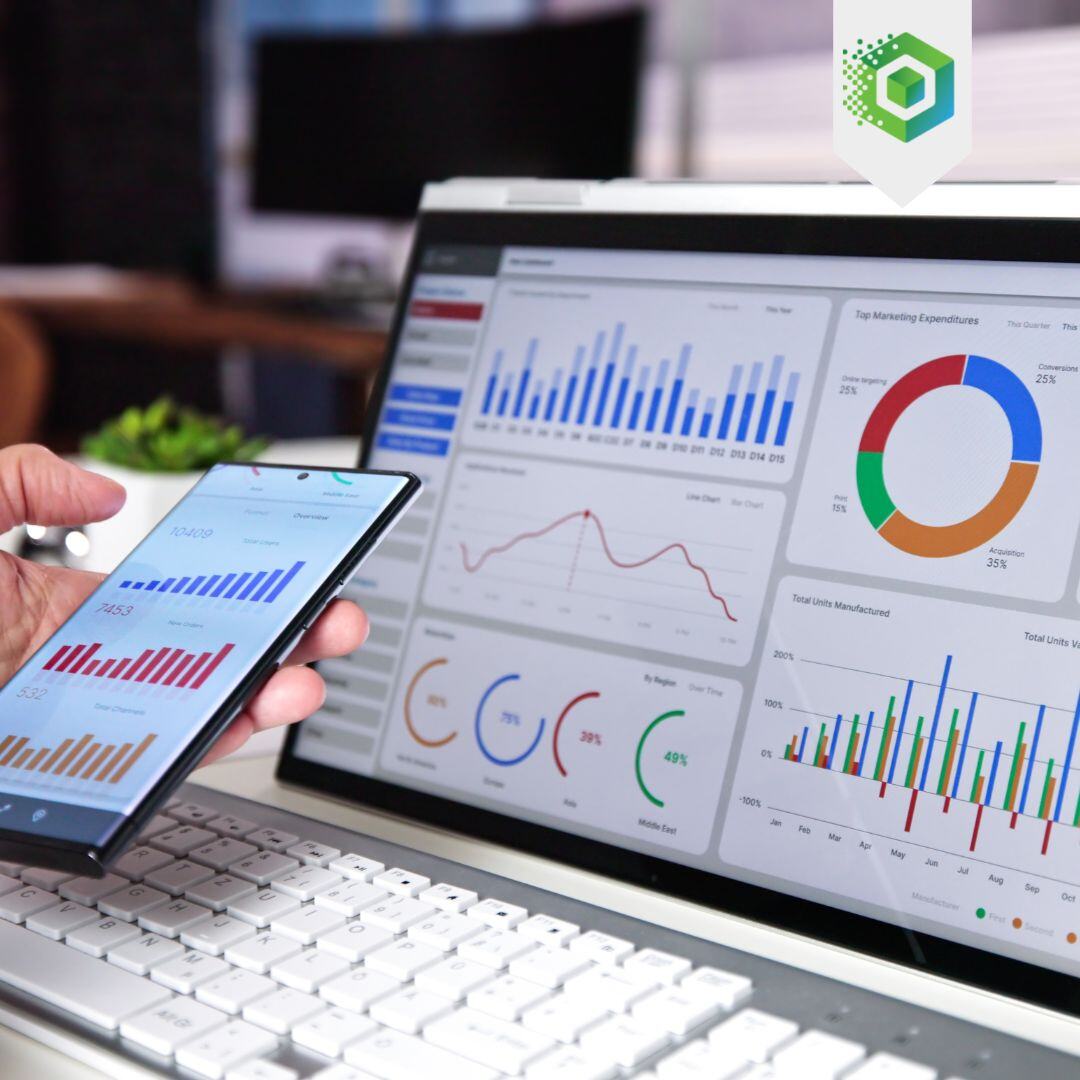In today’s data-driven world, businesses that effectively harness the power of analytics are the ones that stay ahead. As we approach 2025, data analytics for business growth is more than just a buzzword—it’s a necessity. From providing actionable insights to optimizing operations, data analytics plays a pivotal role in scaling businesses, particularly in the ecommerce sector.
This blog will explore how businesses can leverage data analytics, the importance of ecommerce data insights, and the transformative impact of QuickBooks analytics integration and automated business reporting tools.
Why Data Analytics is Crucial for Business Growth
Data analytics has evolved into a vital component for decision-making. By analyzing data from various business operations, companies can identify patterns, predict trends, and make data-driven decisions. Here’s why data analytics is indispensable for growth:
1. Improved Decision-Making
With access to real-time data, businesses can make informed decisions quickly. Analytics provide clarity on which strategies are working and which need adjustment.
2. Enhanced Customer Experience
Understanding customer behavior is crucial in ecommerce. Data insights allow businesses to personalize experiences, improving customer satisfaction and loyalty.
3. Increased Operational Efficiency
Data analytics help identify inefficiencies in processes, allowing businesses to streamline operations and reduce costs.
4. Better Financial Management
Analyzing financial data through tools like QuickBooks analytics integration enables businesses to manage cash flow effectively, forecast revenues, and control expenses.
The Role of Ecommerce Data Insights
Ecommerce businesses generate vast amounts of data daily, from customer interactions and sales to inventory levels. However, data alone doesn’t drive growth—insights do. Ecommerce data insights transform raw data into actionable information that can significantly impact a business’s bottom line.
1. Customer Behavior Analysis
By analyzing data from customer interactions, businesses can:
- Identify top-performing products.
- Understand buying patterns.
- Predict future trends.
2. Sales and Revenue Insights
Detailed sales data help ecommerce businesses:
- Track revenue streams across multiple channels.
- Identify high-performing sales channels.
- Adjust pricing strategies for maximum profitability.
3. Inventory Optimization
Using data insights, businesses can maintain optimal inventory levels, ensuring they meet demand without overstocking. This reduces storage costs and improves cash flow.
QuickBooks Analytics Integration: A Game Changer for Ecommerce
QuickBooks is a staple for many businesses when it comes to accounting and financial management. However, its true potential is unlocked when combined with robust analytics tools. QuickBooks analytics integration allows businesses to delve deeper into their financial data, providing a comprehensive view of their operations.
Benefits of QuickBooks Analytics Integration
- Consolidated Financial Data
QuickBooks integration aggregates data from various sources, offering a unified view of a business’s financial health. This is especially useful for ecommerce businesses managing multiple sales channels. - Automated Financial Reporting
Manual reporting is not only time-consuming but also prone to errors. With automated tools, businesses can generate accurate financial reports instantly, saving time and improving accuracy. - Cash Flow Analysis
Understanding cash flow is critical for business growth. QuickBooks integration provides detailed insights into receivables and payables, helping businesses manage cash flow effectively. - Profitability Insights
By analyzing income and expenses, businesses can identify their most profitable products or services and adjust their strategies accordingly.
The Power of Automated Business Reporting Tools
In 2025, automation will continue to be a cornerstone of efficient business operations. Automated business reporting tools are designed to simplify data management, providing real-time reports and dashboards that offer valuable insights.
Key Features of Automated Reporting Tools
- Real-Time Data Access
Businesses can access the latest data at any time, ensuring they always have up-to-date information for decision-making. - Customizable Dashboards
Different stakeholders require different insights. Automated tools allow businesses to customize dashboards to display the most relevant data for each team or individual. - Scheduled Reporting
Reports can be scheduled to run automatically, reducing the need for manual intervention and ensuring stakeholders receive timely updates. - Trend Analysis
By analyzing historical data, these tools help businesses identify trends and patterns, enabling them to anticipate market changes and adapt their strategies.
How to Leverage Data Analytics for Growth in 2025
To fully harness the power of data analytics, businesses must adopt a strategic approach. Here’s a step-by-step guide:
Step 1: Identify Key Metrics
Determine which metrics are most important for your business growth. For ecommerce, these could include:
- Conversion rates
- Customer acquisition costs
- Average order value
- Lifetime customer value
Step 2: Implement the Right Tools
Invest in tools that offer robust analytics capabilities. Ensure they can integrate seamlessly with your existing systems, such as QuickBooks and ecommerce platforms.
Step 3: Centralize Your Data
Centralizing data from various sources provides a holistic view of your business. This enables better analysis and decision-making.
Step 4: Use Automated Reporting
Set up automated reports to track performance regularly. This ensures you’re always aware of your business’s health and can quickly address any issues.
Step 5: Analyze and Act
Regularly review data insights and use them to inform your strategies. Whether it’s adjusting your marketing approach, optimizing pricing, or improving customer service, data should guide your decisions.
Looking Ahead: The Future of Data Analytics
As technology advances, data analytics will become even more integral to business growth. Here are some trends to watch in 2025:
1. AI-Driven Analytics
Artificial intelligence will enhance data analysis, providing deeper insights and more accurate predictions.
2. Predictive Analytics
Businesses will increasingly use predictive analytics to anticipate customer behavior, market trends, and potential risks.
3. Integration Across Ecosystems
The future lies in seamless integration across all business systems, from CRM and inventory management to accounting and marketing.
4. Enhanced Data Security
As data becomes more valuable, businesses will invest heavily in securing their data against breaches and unauthorized access.
Conclusion
In 2025, leveraging data analytics for business growth will be more critical than ever. By tapping into ecommerce data insights, integrating with QuickBooks analytics, and utilizing automated business reporting tools, businesses can streamline operations, make informed decisions, and drive sustainable growth.
The key is not just collecting data but turning it into actionable insights. Businesses that succeed in this will not only thrive but also stay ahead in an increasingly competitive market.
Ready to unlock your business’s potential with data analytics? Start your journey today and see the difference it can make.





